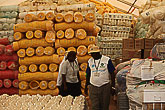Jul 31
20121
Amnesty International, Human Rights Watch, Humanitarian Agencies, The International Campaign to Destabilize Syria
Amnesty International CIA Demonization Human Rights Watch Imperialism Iraq Libya Media NATO Propaganda Syria UN Human Rights Council
UNDERSTANDING THE PROPAGANDA WAR AGAINST SYRIA
Rape and Torture: Weapons in the Propaganda War
May 29, 2012
Eric Draitser
StopImperialism.com
In an article published in The Telegraph, the author cleverly uses a quote from a Deputy Director at Human Rights Watch making a general statement about the use of rape in detention facilities in order to humiliate, degrade and instill fear. However, he makes no direct reference to Syria, though the article clearly attempts to draw that abstract connection. In fact, as one reads further, the claims of rape and torture at the hands of Syrian security forces come from “activists” (the usual anonymous term applied to any quotable voice parroting the Western talking points regarding Assad and the regime) who have fled Syria. In fact, the so-called activists are, in many cases, wanted terrorists who have fled Syria not in fear of persecution but for fear of being brought to justice for their crimes.
It is significant to note that, even with the obvious bias from the “eyewitnesses” and the authors of the article, there is still no mention of actual Syrian forces engaging in these actions. Instead, it is all chalked up to “militias loyal to the Assad regime”, an important distinction which goes conveniently understated. In fact, the only mention of “security forces” involved in this sort of behavior is added in brackets by the authors of the article themselves. This shows how the Western media constantly manipulate quotes and facts in order to shape them to fit the narrative that the Western propagandists want. →







